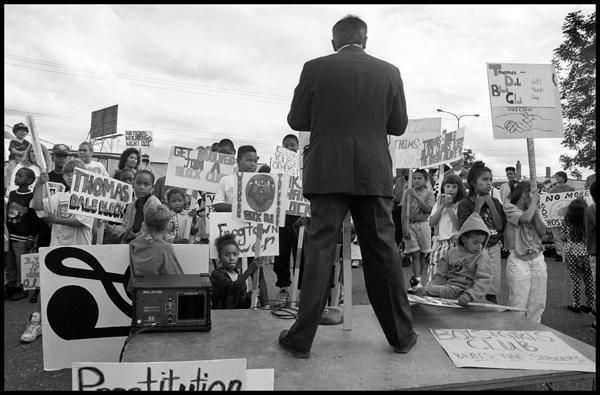The Society Pages’ work on the “social side of politics” has, at the time of this writing, already has yielded some insightful white papers (Joe Gerteis’s piece on religion and political culture brings Weber to life, for instance), several great Roundtable exchanges and Office Hours interviews, and a host of host of provocative blog posts. But we’ve been having a devil of a time illustrating some of these contributions.
When you think of politics and sociology, some of the first images or ideas that come to mind are those of images of demonstrations, activism, political organizing, and protests. And sociologists have definitely been on the leading edge of studying social movements and political activism from the civil rights movement to union organizing to the Tea Party and Occupy movements. However, the images associated with such movements can convey a vision of politics (and the sociological vision of politics) that is far too limited and one-sided. They also make it seem as if all sociologists are radicals and care about protest and social disruption. This is to say, politics isn’t only about protest signs, it’s about people working in dozens of ways to shape the communities in which they live.
Sociologists may be a fairly liberal lot, sympathetic to and often involved in protest, but like everyone else, we also engage politics in many other ways. Public opinion polling is most obvious, but sociologists have contributed to the study of political phenomena by looking at why people vote, how political parties are organized (and organize themselves), and the effects of various “frames” for political issues and candidates. Perhaps most uniquely, political sociologists take a long view toward political issues and how various, social and demographic trends affect voting and representation over time.
The problem, from a visual point of view, is that the images one might imagine to these contributions tend to be boring (how many pictures of voting booths can you stand?), backstage, or too out-of-date to pin down and represent the moment—much less be of immediate interest or use to politicians, policy makers, or political pundits in the heat of an election season.
Without getting into any of these details, I threw the challenge of photographing political sociology over to Wing Young Huie. Political photographs, he admitted, presented a bit of a conundrum for him as well. Part of the problem is that he’s never been particularly political himself. Also, in his experience, the “circus” surrounding politics is so overwhelming and so orchestrated by media consultants and experts that there is little left to appeal to his artistic sensibilities.
Instead, Wing said he tends to be interested in things not usually covered by the political press. “For instance, do aesthetics determine political beliefs or is it the other way around? Why do liberals and conservatives dress the way they do? Can knowing whether or not you like to color outside the lines as a kid be a predictor of your opinion on abortion?” Indeed, Wing summarized—playfully I suspect, perhaps simply for my behalf—that he tends to be interested in the sociology of politics rather than the politics itself. Nevertheless, Wing found our common ground and got us going.
From this foundation, we started going through his archive and contact sheets, looking for images that were “political” or “about politics.” As expected, it was a bit of a challenge. We found a few images of protests and political rallies. These were fabulous, arresting images but had the baggage I discussed above. And many of the more sociological images we looked at were difficult to identify specifically as “political.” Finally, though, there was one image that we both really locked in on.

This image doesn’t have any particular meaning or backstory for Wing. It was on a contact sheet from one of the first rolls he shot for Frogtown, the project that really put him on the artistic map. He doesn’t have any real memory of the image, the politics, or the event, however. “I think,” he explained, “I was just walking around and bumped into it.” He goes on: “I only took two shots of the politician, both from the back.” Looking at it now, it is “amazing how few of the children, who became unwitting political advertisements, are actually looking at the politician.”
But as we continued talking about this picture, we came to realize it’s a wonderful image and metaphor for the backstage, backstory visions of politics in which we are both interested—images that are not only difficult to represent visually but so often missing from both public and scholarly understandings of politics and the political process. It’s a different angle and one we don’t usually pay attention to: this, though, is where the action so often missing from both popular and scholarly understandings of politics and the political process really happens.

Comments